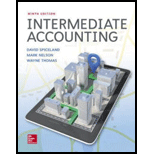
Derivatives: Derivatives are some financial instruments which are meant for managing risk and safeguard the risk created by other financial instruments. These financial instruments derive the values from the future value of underlying security or index. Some examples of derivatives are forward contracts, interest rate swaps, futures, and options.
Hedging: This is the business deal entered into, by a company to produce exposure or coverage over the exposure caused by the existing deal. In simple terms, this is the transaction which produces gains to cover the losses produced by existing transaction.
Fair value hedge: If the company uses any derivative to cover the risk due to fair value changes of asset, liability, or a commitment, the derivative is classified as fair value hedge.
To explain: Whether the gains and losses on fair value hedge should be recorded immediately, or should be included in the gains and losses on the item being hedged
Want to see the full answer?
Check out a sample textbook solution
Chapter A Solutions
Intermediate Accounting
- No chatgpt correct solution.arrow_forwardNeed soln this No AIarrow_forwardWalsh plc sells wash machines and provides a one-year warranty against faults occurring after sale. Platt estimates that if all goods under warranty at its statement of financial position date of 31 December 2022 need minor repairs the total cost would be £ 6 million. If all the products under warranty needed minor repairs the total cost would be £ 24 million. At 31 December 2023 these amounts have risen to £ 7 million and £ 26 million respectively. Based on previous years` experience, Walsh estimates that the 80% of the products will require no repairs, 18% will require minor repairs and 2% will require major repairs. During the year ended 31 December 2023 actual costs of repair under the warranty amounted to £ 1,400,000. Required: a. b. What are the distinctions between liabilities, provisions and contingent liabilities under IAS 37 “Provisions”? Explain the accounting treatment of the warranty in Walsh plc`s financial statements for the year ended 31 December 2023, qualifying…arrow_forward
 Cornerstones of Financial AccountingAccountingISBN:9781337690881Author:Jay Rich, Jeff JonesPublisher:Cengage Learning
Cornerstones of Financial AccountingAccountingISBN:9781337690881Author:Jay Rich, Jeff JonesPublisher:Cengage Learning Intermediate Accounting: Reporting And AnalysisAccountingISBN:9781337788281Author:James M. Wahlen, Jefferson P. Jones, Donald PagachPublisher:Cengage Learning
Intermediate Accounting: Reporting And AnalysisAccountingISBN:9781337788281Author:James M. Wahlen, Jefferson P. Jones, Donald PagachPublisher:Cengage Learning EBK CONTEMPORARY FINANCIAL MANAGEMENTFinanceISBN:9781337514835Author:MOYERPublisher:CENGAGE LEARNING - CONSIGNMENT
EBK CONTEMPORARY FINANCIAL MANAGEMENTFinanceISBN:9781337514835Author:MOYERPublisher:CENGAGE LEARNING - CONSIGNMENT





